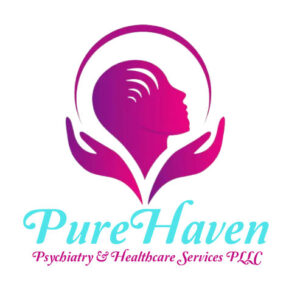Bipolar Disorder Symptoms in Texas: Warning Signs, Struggles & Hope for Recovery
Bipolar disorder affects millions, yet many people in Texas remain undiagnosed or misdiagnosed. Recognizing the early and ongoing symptoms of bipolar disorder is critical for receiving the right treatment and living a balanced life. This blog dives into the key bipolar disorder symptoms in Texas, highlights how they differ from regular depression, and guides you on when and where to seek help—especially if you or a loved one are navigating this challenging condition.
Table of Contents
- What Is Bipolar Disorder?
- Common Bipolar Disorder Symptoms in Texas
- Bipolar I vs. Bipolar II: What’s the Difference?
- Early Warning Signs in Teens and Adults
- Bipolar Disorder Triggers in Texas
- Why It’s Often Misdiagnosed
- Effective Treatment Options in Texas
- When to Seek Professional Help
- Call to Action
- Final Thoughts
1. What Is Bipolar Disorder?
Bipolar disorder is a serious mental health condition marked by extreme mood shifts, including emotional highs (mania or hypomania) and lows (depression). These mood swings are not just fleeting—they can deeply affect your energy, decision-making, relationships, and ability to function. Bipolar disorder is classified into different types, including Bipolar I, Bipolar II, and Cyclothymic Disorder, each with varying severity of symptoms.
2. Common Bipolar Disorder Symptoms in Texas
When identifying bipolar disorder symptoms in Texas, it’s important to consider both depressive and manic episodes. Here’s what to look out for:
Depressive Symptoms:
-
Persistent sadness or hopelessness
-
Loss of interest in activities
-
Fatigue or low energy
-
Changes in appetite or sleep
-
Feelings of worthlessness or guilt
-
Thoughts of self-harm or suicide
Manic or Hypomanic Symptoms:
-
Unusually high energy or euphoria
-
Rapid speech or racing thoughts
-
Decreased need for sleep
-
Risk-taking behavior (spending sprees, reckless driving)
-
Inflated self-esteem or grandiosity
-
Agitation or irritability
These symptoms can last for days or weeks and are often severe enough to disrupt everyday life.
3. Bipolar I vs. Bipolar II: What’s the Difference?
Bipolar I involves at least one full manic episode, which is often followed by depressive episodes. These manic episodes are intense and may significantly impair daily functioning. In contrast, Bipolar II includes one or more major depressive episodes along with at least one hypomanic episode—a milder form of mania that may not cause severe disruption but still impacts mood and behavior. Both types of bipolar disorder are serious mental health conditions, but their presentation and treatment strategies can differ considerably depending on the severity and frequency of mood shifts.
4. Early Warning Signs in Teens and Adults
Many individuals in Texas begin showing signs of bipolar disorder during their late teens or early adulthood. Early signs may include:
-
Sudden mood swings that seem “out of character”
-
Declining performance at work or school
-
Risky behavior or impulsive decision-making
-
Sleep disturbances not linked to lifestyle
-
Increased sensitivity to stress or criticism
5. Bipolar Disorder Triggers in Texas
Environmental and lifestyle factors can significantly influence the severity and frequency of bipolar disorder symptoms, especially in a region like Texas. For example, seasonal shifts such as extreme summer heat or limited daylight during winter months can disrupt mood stability. High-stress environments—like demanding work conditions, academic pressures, or family-related stress—can also act as triggers, leading to emotional instability. Additionally, substance use, including alcohol or recreational drugs, is a common co-factor that often worsens or prolongs both manic and depressive episodes.
6. Why It’s Often Misdiagnosed
One of the biggest challenges with bipolar disorder symptoms in Texas is that they’re frequently mistaken for major depression or anxiety disorders. Manic symptoms may be seen as “productive” or “energetic,” while depressive episodes are treated as standalone depression. This misdiagnosis can lead to treatment with antidepressants alone—potentially worsening manic symptoms.
7. Effective Treatment Options in Texas
The good news is that with accurate diagnosis, bipolar disorder is highly treatable. Common approaches include:
-
Mood stabilizers like lithium or valproate
-
Antipsychotic medications for manic episodes
-
Cognitive Behavioral Therapy (CBT)
-
Psychoeducation for patients and families
-
Routine and lifestyle management
Accessing specialized care in Texas ensures that treatment plans are personalized to the individual’s specific type and symptom pattern.
8. When to Seek Professional Help
You should seek immediate mental health support if you or a loved one:
-
Feels out of control emotionally or behaviorally
-
Experiences thoughts of self-harm or suicide
-
Struggles to maintain daily responsibilities due to mood shifts
-
Notices recurring cycles of energy surges followed by crashes
Prompt intervention prevents the escalation of symptoms and helps avoid hospitalization or crisis.
9. Call to Action
If you or someone you know is showing signs of bipolar disorder symptoms in Texas, don’t wait. Pure Haven Psychiatry offers expert evaluations, compassionate care, and comprehensive treatment plans tailored to your needs. Our team specializes in mood disorders and is committed to helping you regain stability and clarity. Schedule an appointment today and take the first step toward healing.
10. Final Thoughts
Living with bipolar disorder can feel overwhelming—but it doesn’t have to be. Recognizing the bipolar disorder symptoms in Texas is the first step toward reclaiming control of your mental health. With the right diagnosis and treatment, it’s entirely possible to lead a fulfilling and productive life.
Disclaimer
This blog is for informational purposes only and should not be used as a substitute for professional medical advice, diagnosis, or treatment. If you or someone you know is experiencing severe symptoms, please seek help from a licensed mental health provider or call emergency services immediately.

